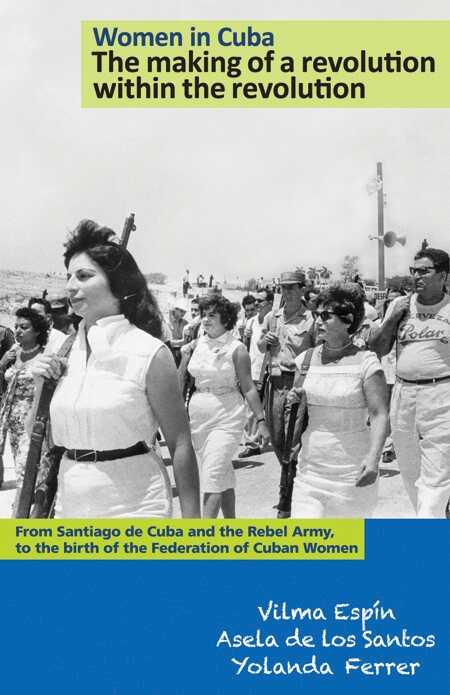Women in Cuba
The Making of a Revolution within the Revolution
Modern history is replete with women’s participation in armed struggles and uprisings. As with all histories, the fruits of their involvement are contingent upon the outcomes and the locations in which the struggles took place. During the 1940s in Europe, for example, Italian women partisans helped pave the way for their right to vote and to participate in politics, while the Greek women of the resistance returned to the gender-stratified culture beyond which they had briefly stepped. A little more than a decade later, in Cuba, what was achieved by and for women during and after the Cuban Revolution was nothing less than remarkable.
Outlined in this book, via interviews with the authors, are the specifics of those changes and the paths by which the accomplishments were attained. Espin and de los Santos played prominent roles in the revolution; Ferrer joined the cause at age fourteen, shortly after the revolution triumphed in 1959. The Cuba of the 1950s was run by the US-backed dictatorship of Fulgencio Batista and was a land plagued by inequalities, illiteracy, and corruption, compounded by sexism, racism, and extreme class divisions. The revolution and its ensuing government fundamentally changed the structures of society and its institutions. These changes included vast improvements in access to resources, education, healthcare, and sanitation; for women the transformations had very gender-specific implications, as their participation in the public sphere increased and their role in society improved.
Oddly, no discussion of women’s rights, in the broader context of human rights, is included. Additionally, the occasional (bordering on comical) Cold War-era “lingo,” along with an excess of photos of and quotes from Fidel Castro, are unnecessary distractions from the overall substance and merits of this text. Despite these lapses, the writers have compiled a genuinely intriguing piece of writing.
American readers of Women in Cuba are escorted to the “prohibited” land of Cuba without State Department permission or scrutiny. And thus they are given the freedom to arrive at conclusions of their own regarding the island nation and its women. A revealing examination of the women of Cuba for travelers, as well as sociology, history, or women’s studies students and teachers, the book is also published by Pathfinder Press in a Spanish edition as Las mujeres en Cuba: haciendo una revolucion dentro de la revolution.
Reviewed by
Elissa Mugianis
Disclosure: This article is not an endorsement, but a review. The publisher of this book provided free copies of the book to have their book reviewed by a professional reviewer. No fee was paid by the publisher for this review. Foreword Reviews only recommends books that we love. Foreword Magazine, Inc. is disclosing this in accordance with the Federal Trade Commission’s 16 CFR, Part 255.

